Could High Barnet host a national visitor centre for the Wars of the Roses in vacant Tudor Hall?
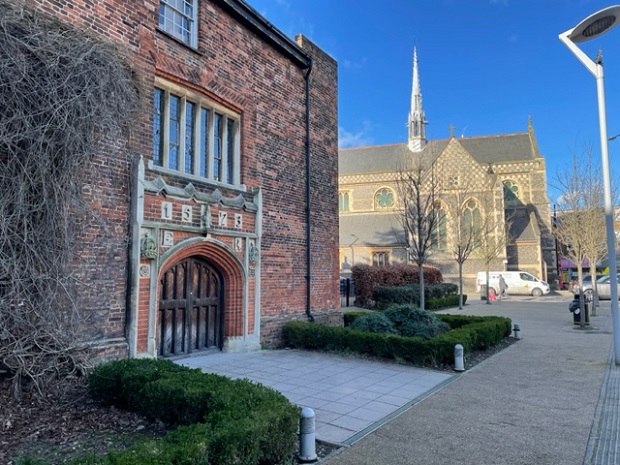
High Barnet’s much-loved Tudor Hall, under used for so long, might become a national focal point for explaining and celebrating the Wars of the Roses and the prominent part played by the 1471 Battle of Barnet.
When the former schoolhouse was put up for sale last year, it opened up the possibility of Barnet Museum together with national and local history groups seizing the initiative to see whether the hall could be re-opened for public use and transformed into a visitor centre.
Barnet and Southgate College revealed last December that the iconic Tudor Hall – originally the schoolhouse for the free grammar school granted a charter by Queen Elizabeth I in 1573 – is up for sale.
Property agents Colliers are advertising the property, which is in a prominent position just across Wood Street from the parish church of St John the Baptist, as an “exceptional investment opportunity” – and the asking price is thought to be in the region of £1 million.
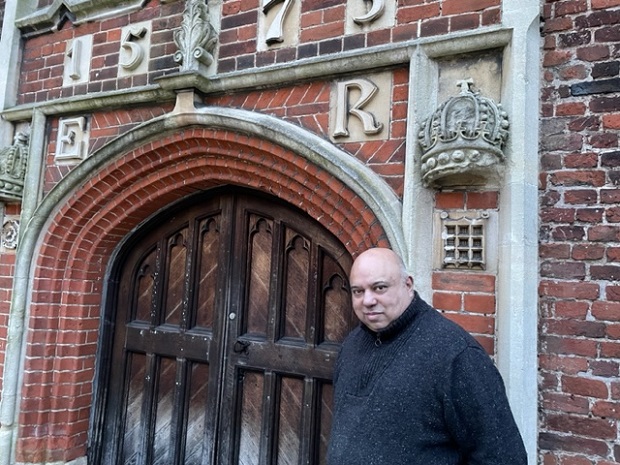
Mike Noronha, curator of Barnet Museum (above), said the chance to try to acquire the Tudor Hall was an opportunity that could not be missed.
“We are at a very early stage in considering this, just looking at possibilities for seeing how we might be able to put together a bid to acquire the building.”
The museum is working with organisations like the Battlefields Trust, local history groups and Queen Elizabeth’s School to assess various options including whether there was a way of ensuring that the Tudor Hall was retained for public use and if there is a way to raise sufficient funds to acquire the hall and fit it out as a visitor centre.
Unlike the battles of the 1640s between the Royalists and Parliamentarians – commemorated at a national Civil War centre at Newark – there is no national focal point to celebrate the Wars of the Roses between the armies of the Lancastrians and Yorkists.
This was an era of British history when the country was at war with itself over who should be King and when a decisive battle was fought just north of Barnet town centre in 1471, and which is commemorated by Hadley Highstone.
Numerous local organisations were surprised and somewhat disappointed to hear that the former schoolhouse, which fills on side of the courtyard in front of Barnet and Southgate College campus, is up for sale, raising doubts about its future use for community events.
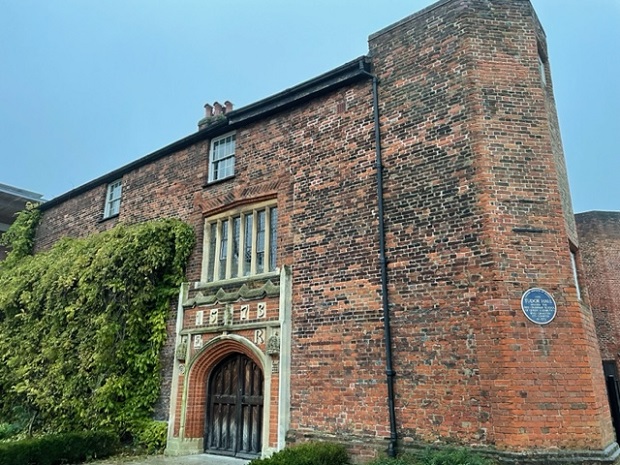
In recent years the hall has been part of what the college calls its “learning environment” and was occasionally hired out for conferences, exhibitions, and other local events staged by groups such as the Barnet Guild of Artists.
Colliers say the hall, which is a grade II listed building with Historic England, is now surplus to college’s requirements and is to be sold on a leasehold basis with vacant possession.
High Barnet councillors and local groups have indicated they hope that a new owner of the building will ensure it will still be available for community use.
Colliers are advertising the hall as a potential “banqueting hall and conference space”. Its sale will offer an opportunity for an investor to undertake structural repairs to refurbish and upgrade the interior areas which include a first-floor balcony and second-floor offices.
The sale is via informal tender with a bid date to be announced in due course if not already sold.
Similar iconic and historic buildings such as redundant churches, schools, halls, and banks are often converted for other uses such as restaurants, public houses, gymnasiums, or offices, although any change of use of the Tudor Hall would have to take account of its status as a listed building.
High Barnet councillor Emma Whysall said she believed the hall should be maintained as a community asset and kept open for public use.
“Ideally the hall should be deemed to be a community asset for the use of residents and the public.
“If Barnet Council had the money, I am sure the council could take it on, but sadly that is not the case.”
Theresa Villiers, MP for Chipping Barnet, thought that anyone taking over the Tudor Hall would be limited in what they could do because of its listed status.
Robin Bishop, who leads on planning and environmental, said he was sure the Barnet Society would do all it could to press the case for the hall’s continued use by the community.
“An ideal occupant would be Barnet Museum, but it would need a long lease and probably far more money than it could raise.
“It is hard to think of a commercial, or even charitable owner of the building, who would welcome public access unless it generated income, perhaps as an eating establishment or gym.”
In previous years the interior of the hall has been incorporated into the space used by Barnet’s annual Christmas fayre for stalls and attractions – and was a regular home for Father Christmas and Santa’s grotto.
By last Christmas the hall was already vacant, locked-up and on the market with its celebrated entrance, with the date ER 1573 and the Royal insignia, providing a reminder of its place in the town’s history.
It was Barnet’s success in Tudor times as a bustling market town on the outskirts of London that caught the attention of Queen Elizabeth 1 during the early years of her reign.
In 1573 she issued a charter establishing in Barnet a “free grammar school of Queen Elizabeth for the education, bringing up and instruction of boys and youth”, one the many she founded during her years on the throne.
Donations from church collections in the City of London helped to finance the construction of the original schoolhouse in around 1577, initially for up to 90 boys, and a boarding facility in the roof.
Boys at the school would have ranged in age from six to 19, of whom 30 or so would have been day boys and 15 to 20 boarders who lodged in the roof space.
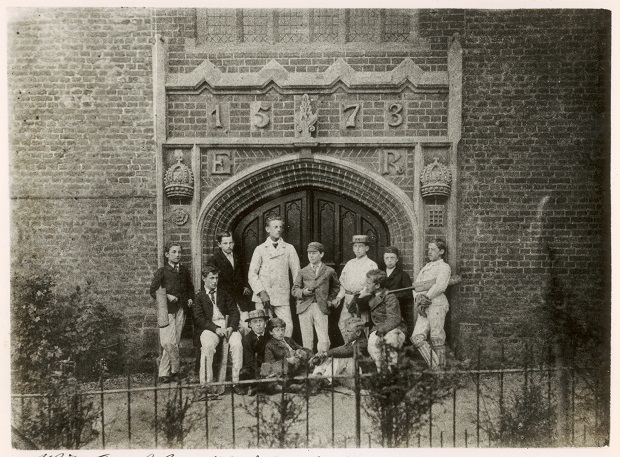
This picture of the school cricket team was taken in 1880 (and is reproduced courtesy of Queen Elizabeth’s School collection).
By 1919 the school had a roll of 240 pupils and the original schoolhouse, and some additional buildings were deemed to be inadequate. The following year the Board of Education recommended the construction of a new school on a new site.
In 1927 Hertfordshire County Council purchased a site off Queens Road and authorised the construction of a new school for 325 boys, at a cost of £5,000.
The new school building was opened in 1932 and forms part of what is now a much-enlarged Queen Elizabeth’s School (still known by local residents and parents as QE Boys).
Because of a concern at the time about the importance of protecting the original schoolhouse as an historical building, the governors sold it to the trustees of the Jesus Hospital Charity in 1928 for £1,750 on condition that it was preserved as an ancient monument.
The original schoolhouse was extended and altered in the 19th century and modified in the 20th and 21st centuries.
1 thought on “Could High Barnet host a national visitor centre for the Wars of the Roses in vacant Tudor Hall?”
Comments are closed.

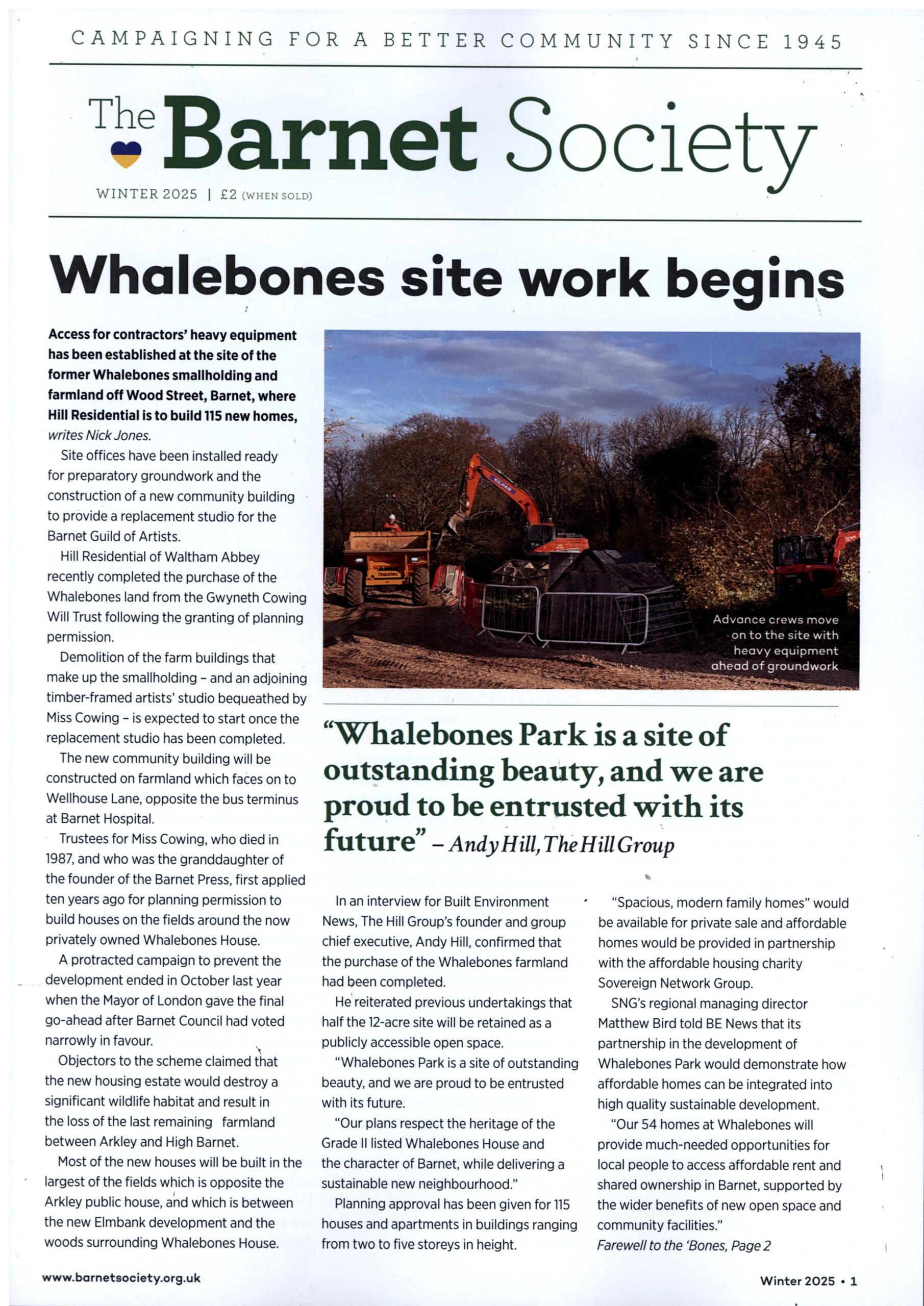
Certainly would be great to be taken over by Barnet Museum or council. It’s seems unlikely however with even more council and museum budget cuts on the way.
In reality we all know in Tory Britain that like everything else it will be bought by overseas investor/private equity/property investor etc….
It will be another one of the many public assets sold off over the last 30 years.
Our local MP will complain publicly but then vote for all the policies which have resulted in this type of thing happening.